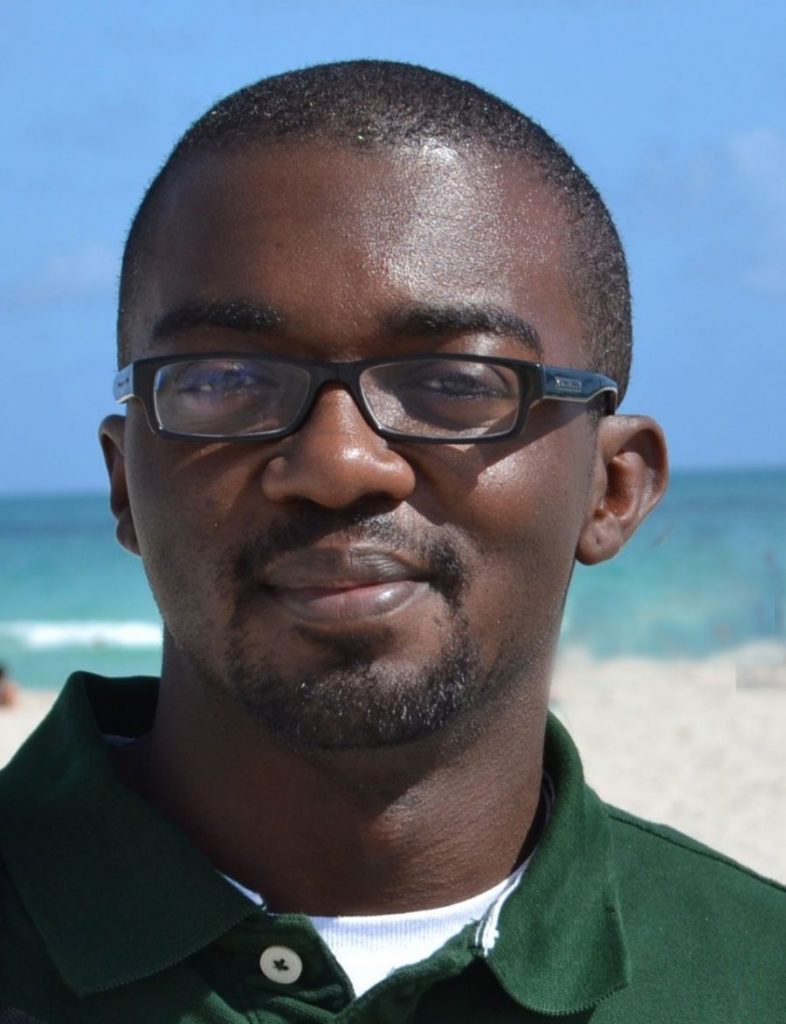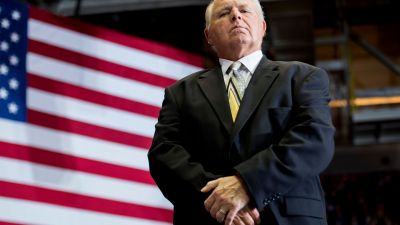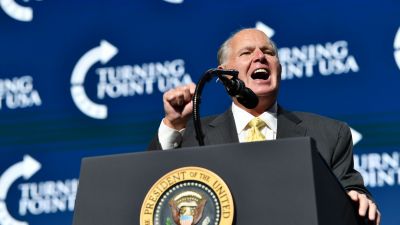
Members of the media raise their hands to ask questions during a daily White House briefing by Trump administration press secretary Sean Spicer on Jan. 23, 2017. (Photo by Alex Wong/Getty Images)
Both during his campaign and after his inauguration, President Trump has had a constant line of animosity toward the free flow of news and information. He derides outlets such as The New York Times, The Washington Post, and CNN, among others, as “failing,” and consistently uses the term “fake news” to describe any stories that conflict with his narrative — from the crowd size at his inauguration to confirmed reports that his national security adviser had spoken to Russian officials before he took office. He, and members of his senior staff have even gone so far as to call the news outlets that he lumps into his definition of “fake news” as the “enemy of the people.”
The press has often had an adversarial relationship with the ruling party in American politics. It is, after all, often called the “fourth estate” — a fourth branch of government that provides an external check on those in power. It is the job of journalists to keep the public informed on the internal happenings of the executive, judicial and legislative branches of our government, the details of which can be far beyond the understanding of the average citizen. Both reporters and editorial writers step in as educators to help break down the actions of our government on a daily basis.
As part of our News Literacy course, we teach students the tools needed to become more active consumers of news and information, so they know where and how to access reliable information in order to become informed citizens. At its core, news literacy is all about reliable information that allows citizens the ability to make a decision, take an action or share that information responsibly with others.
As you may recall, in past columns, we focused on one of the tools used in determining whether or not a piece of information could be called “news.” That process involves looking for the process of Verification, in which journalists provide evidence to determine whether or not the information was true; checking if that information came from an Independent source, whose only motivation for publishing the information is to inform readers; and making sure that the source is Accountable for the information being published — that is, takes personal and institutional responsibility for what is published.
To reinforce the importance of finding VIA in information, we reinforce with our students just how powerful information can be, a concept that is often overlooked. In our power of information lesson, we introduce students to several interrelated themes, the first two of which I’ll introduce here.
First, there is a universal need to receive and share news. To illustrate this concept we use a science metaphor and say this need stretches back to the earliest humans and is so ingrained in us that is almost part of our DNA. What makes information so integral to all humans is that it Alerts, Diverts and Connects us all. Think about how many times you’ve read and shared information with others either in person or on social media. Also, if you’re anything like me, you find yourself in the never ending spiral of Facebook status updates multiple times throughout the day, wondering where the time went. We are all drawn to consuming and sharing news. Many anthropologists have found in their studies of prehistoric societies that systems of exchanging news and information were highly prized.
Second, people in power to have sought to control information as a method of controlling the public. Qin Shi Huang, the founder of China’s Qin dynasty and the first emperor of a unified China, demonstrated that imperative in 213 BC when he ordered rulers to gather and destroy all writings that could weaken his rule. A year later, according to Records of the Grand Historian, or the Shiji, Qin Shi Huang ordered more than 460 scholars to be buried alive for failing to surrender their books, as depicted in this 18th-century painting.
More than 1500 years later, the the invention of the printing press made it possible to publish and distribute written content on an unprecedented scale. While newspapers had been around since the time of Ancient Rome, as bulletins posted in public, the printing press allowed for individuals to now read the information in their own homes on their own schedule. Many rulers saw this wide, unfettered dissemination of news as a threat.
For example, Napoleon found that even his military genius and governing prowess could be challenged by the printed word. Over the course of his rule both as first consul and emperor, Napoleon actively worked to influence published information about him. He slashed the number of newspapers in Paris from 73 to 4 between 1800 and 1807. He also exercised strict censorship over all published materials. We say the pen is mightier than the sword. Napoleon put it this way: “Four hostile newspapers are to be feared more than a thousand bayonets.”
Technological advances in the centuries since Napoleon’s rule have only heightened the struggle by those in power to control the flow of information. Hitler used sophisticated propaganda to seize and hold power in Germany. By the same token, Napoleon’s fear of a few newspapers was not misplaced. In 1974, President Richard Nixon was forced to resign because of the investigative journalism practiced by The Washington Post and other publications.
Thus it should be no surprise that President Trump has decided to attack the news media. Every president — even, no, especially Abraham Lincoln — has had an adversarial relation with at least some of the journalists who covered them. The difference this time is breadth and open disdain of Trump’s attacks, and that is in part due to the communications revolution of the past 20 years.
The power of information has always been magnified by new technologies, and that has been even truer for the arrival of the internet, smartphones and social media. Just as Gutenberg’s printing press gave individuals with the means to do so the ability to spread information to the masses, this latest communications revolution has given that power to the masses themselves. Social media has not only replicated traditional human-to-human connections, but it has amplified those connections in ways that were unimaginable in the 20th century.
Trump can and has used these new technologies to circumvent the news media. With the power to Alert, Divert and Connect millions in the hands of anyone — especially a president — with a smartphone, it remains to be seen if those newspapers Napoleon so feared are as dangerous to a ruler as they once were.




